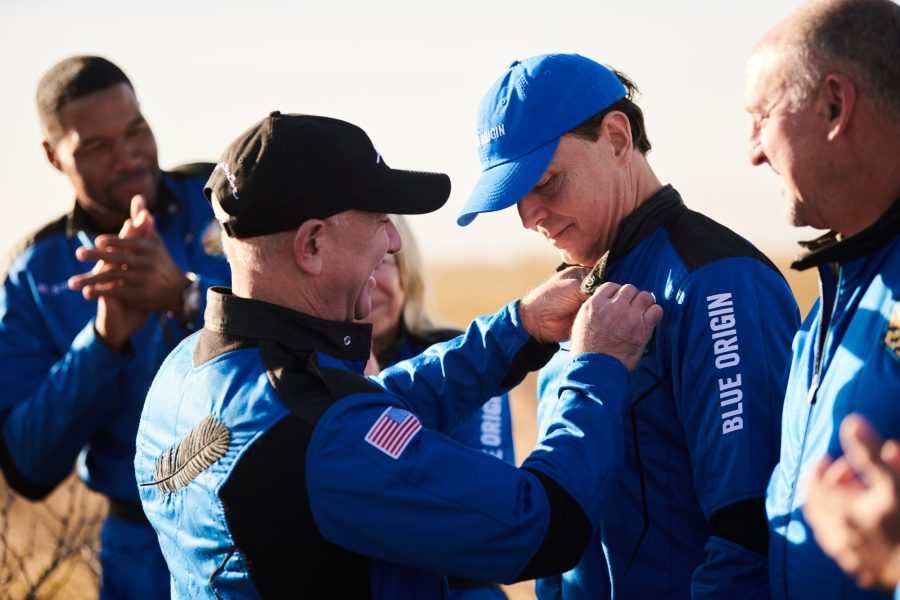Dylan Taylor, a University of Arizona alumnus, is the 606th human to go to space. Taylor majored in material science and engineering while studying here at the UA Honors College before going to business school for his master’s degree in business administration at the University of Chicago.
Taylor was part of the crew on Blue Origin’s New Shepard Mission19 which took flight on Dec. 11, 2021.
When asked about his experience in space, Taylor said, “[It was] totally life changing, and I’m not exaggerating. I had very high expectations and they were just completely smashed in a positive sense.”
Taylor said it had been a lifelong dream for him to go to space, and his endeavors at the UA helped prepare him for this flight.
“Getting the education I did at the UA and having that technical foundation helped me build a career, … which allowed me to have a significant role in the space industry and ultimately allowed me to be on the flight,” Taylor said.
When asked about his most influential piece of advice to a current or future UA student, Taylor says to find a mentor, as “it’s the single biggest accelerator for anybody. Find someone that you like and respect who’s well positioned in whatever industry you’re passionate about and have them mentor you.”
With constant mentorship and dedication to the subject field, Taylor was able to secure a seat on this flight. Preparation for a flight to space was no easy fleet, but Taylor suggested that the training was actually really fun and educational.
Related: Women in STEM at the UA
“We did a bunch of simulations which I really enjoyed,” Taylor said. “Getting to know my crew-mates was amazing, I was with some really great people. We still talk pretty much daily and it’s been a couple months since the flight, we really formed a tight bond.”
Taylor was one of six passengers on his flight. According to the Blue Origin website, “the spacious and pressurized crew capsule is environmentally-controlled for comfort and every astronaut gets their own window seat. The vehicle is fully autonomous. There are no pilots.”
“You’re accelerating at a just a ridiculous rate, you end up going I think around 3,000 miles an hour,” Taylor said. “It’s amazing on the way up, and then once you’re at the apogee and you’re in micro-gravity or zero gravity and you’re floating above the earth it is mind blowing. Once you strap back in a return and go through the atmosphere you can definitely feel the forces. I think we were pulling something close to 6 g’s on the way down. Then of course the parachute opens and you’re home free so to speak and you’re excited to return and see your family and give them a big hug.”
The totality of the trip is around 40 minutes from the time entering the capsule to walking off of it. However, the whole experience is an all day affair. Taylor believes his involvement in the space industry and his specialized interest in commercializing trips to space is a part of the reason he was able to attend.
“For me, it is really this notion that space has the power to transform your worldview and this kind-of universal phenomenon of seeing earth from space,” Taylor said. “[The flight] made me have more environmental awareness, more stewardship for making the world a better place, those kinds of things.”
Taylor loved his time at the UA and accredited his experience to the beginning of a successful career. Taylor is also a large donor to the UA and said he is “excited about what’s happening with the new leadership in the College of Engineering and of course [President Dr. Robert C. Robbins] as president.”
Follow Annabel Lecky on Twitter









